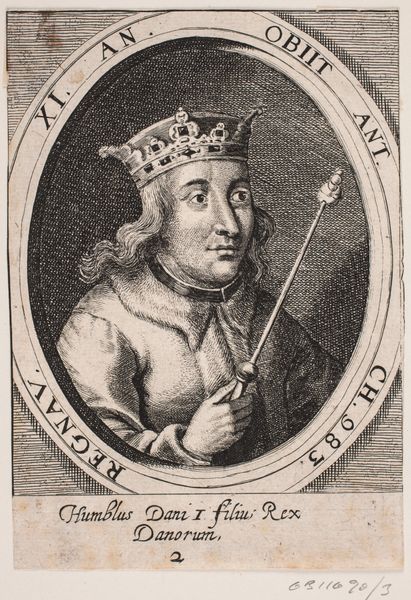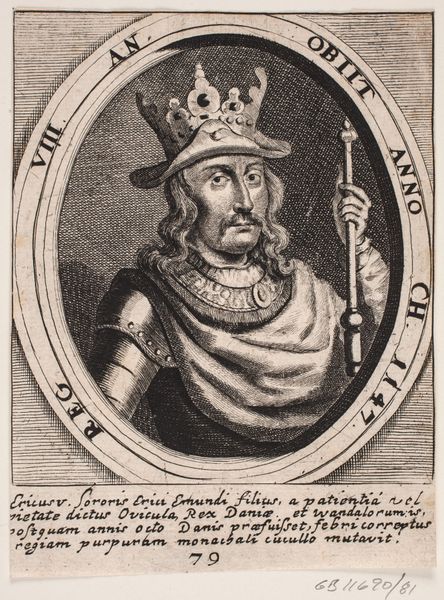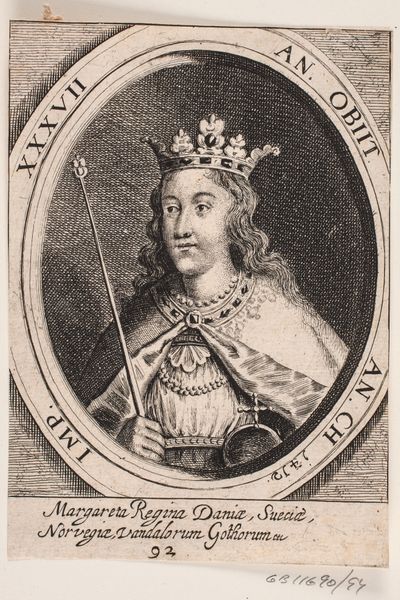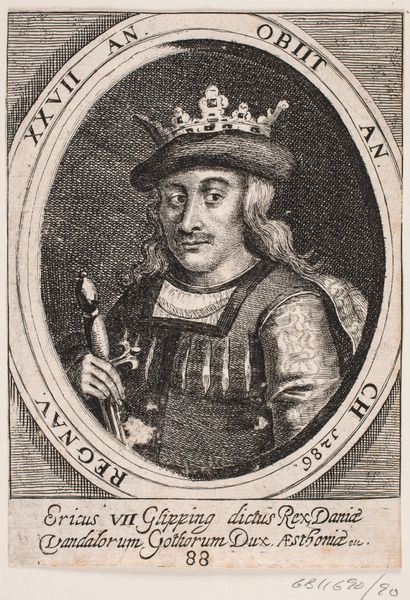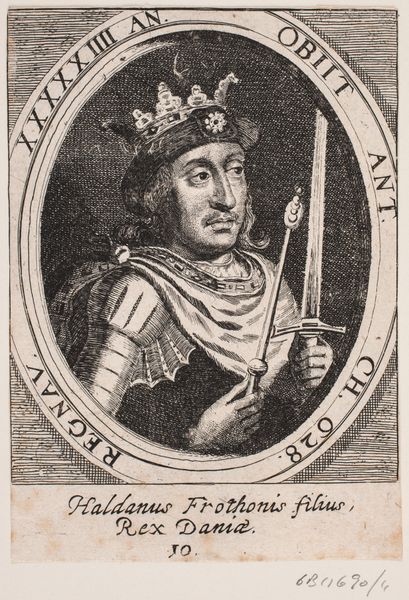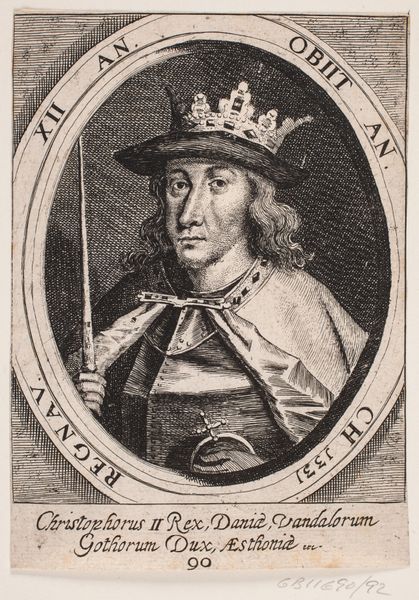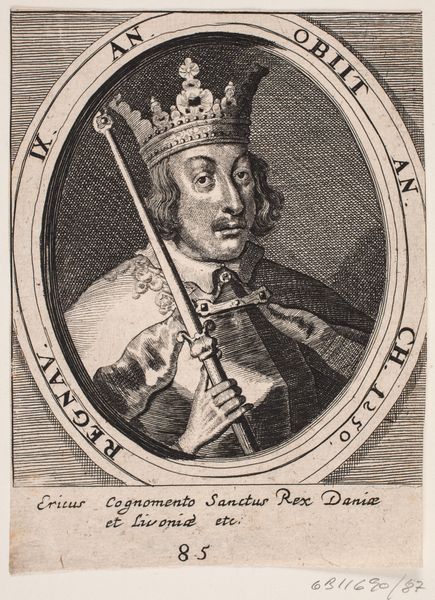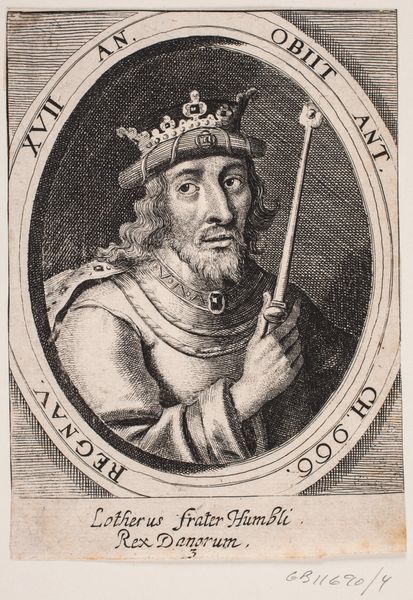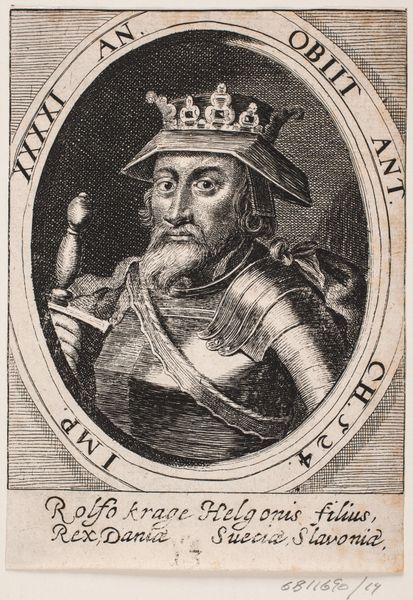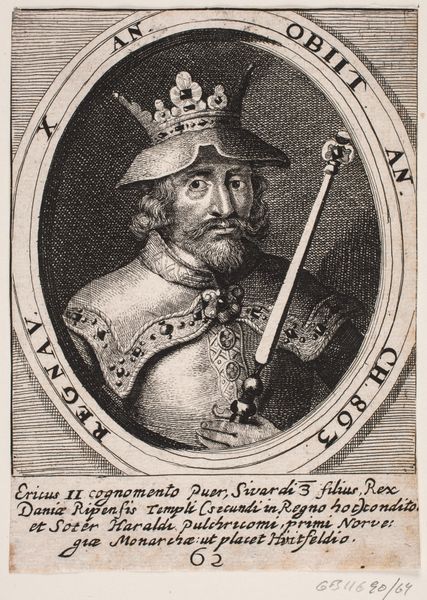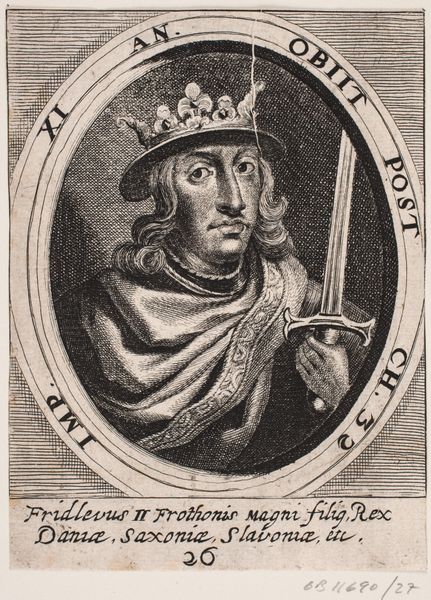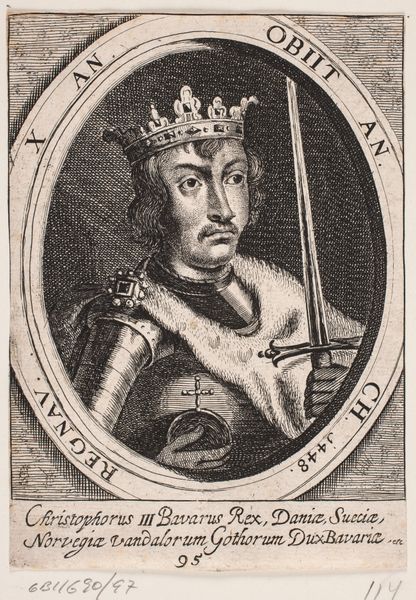
print, engraving
#
portrait
# print
#
history-painting
#
engraving
Dimensions: 140 mm (height) x 100 mm (width) (bladmaal)
Curator: Let's delve into this print of Oluf II, created anonymously in 1646. It’s currently held at the SMK, Statens Museum for Kunst. Editor: My first impression? Somber, even austere. The oval frame, the fine lines of the engraving… it all suggests a meticulously constructed image intended to project a certain kind of power, a sort of distanced authority. Curator: Exactly. Consider the oval. It confines the figure, but also elevates him, sets him apart. Oval frames historically were more common in portraying royalty. He's presented as set apart from the masses, an individual worthy of singular consideration. And that crown... Editor: The crown, of course, is the key signifier here. But it feels almost too heavy, slightly awkward on his head. The detail is incredible, but perhaps it speaks to the weight of the crown? What are we being asked to remember? We read “Olaus V Rex,” he’s titled as king of various territories including, "Danica, Norwegia…" Curator: Precisely. This is where the historical context enriches our understanding. This image operates within a cultural memory of kingship and dynasty. The crown, the scepter, the very posture–it all aligns with symbolic languages that, in this case, reaches as far back as 1387! He looks straight ahead; everything serves the idea of legacy. He died as a teenager and his successors brought much upheaval in their wake. His importance has to do more with how others viewed the era after him. The inscription around him is fascinating to consider here, “X An. Prefuit… Obit An. CH. 1387.” Editor: You raise an important point, as do those names on the bottom! I'm particularly intrigued by those titles "Vandalorumg, Gothorumg," what did it mean for a European King to title himself “king of the vandals”? Were they allies, territories, or appropriated lineages? Did this impact ideas of Nordic power in any real sense or merely symbolically? Curator: An important consideration of both contemporary understanding, and an understanding that the person for whom the piece was commissioned already held! Such objects not only documented and symbolized, but had symbolic political repercussions as they influenced and documented how such people as Olaus saw themselves, as the audience of that cultural symbol. I would not be surprised to find how some future politician would use that image. Editor: The power of art history... never ceases to reveal new intersections of the personal and the political. Curator: Agreed. What begins as a single portrait yields narratives woven into the cultural consciousness.
Comments
No comments
Be the first to comment and join the conversation on the ultimate creative platform.
